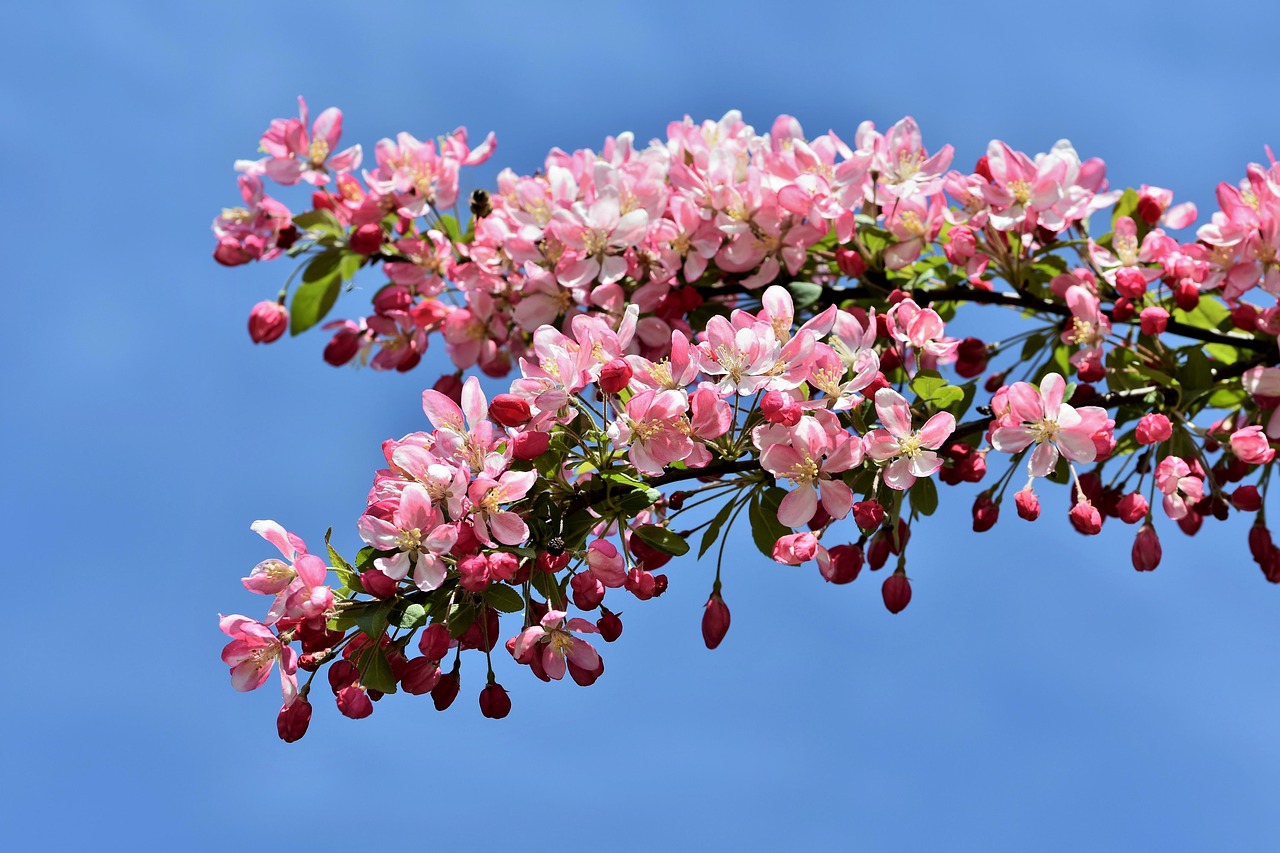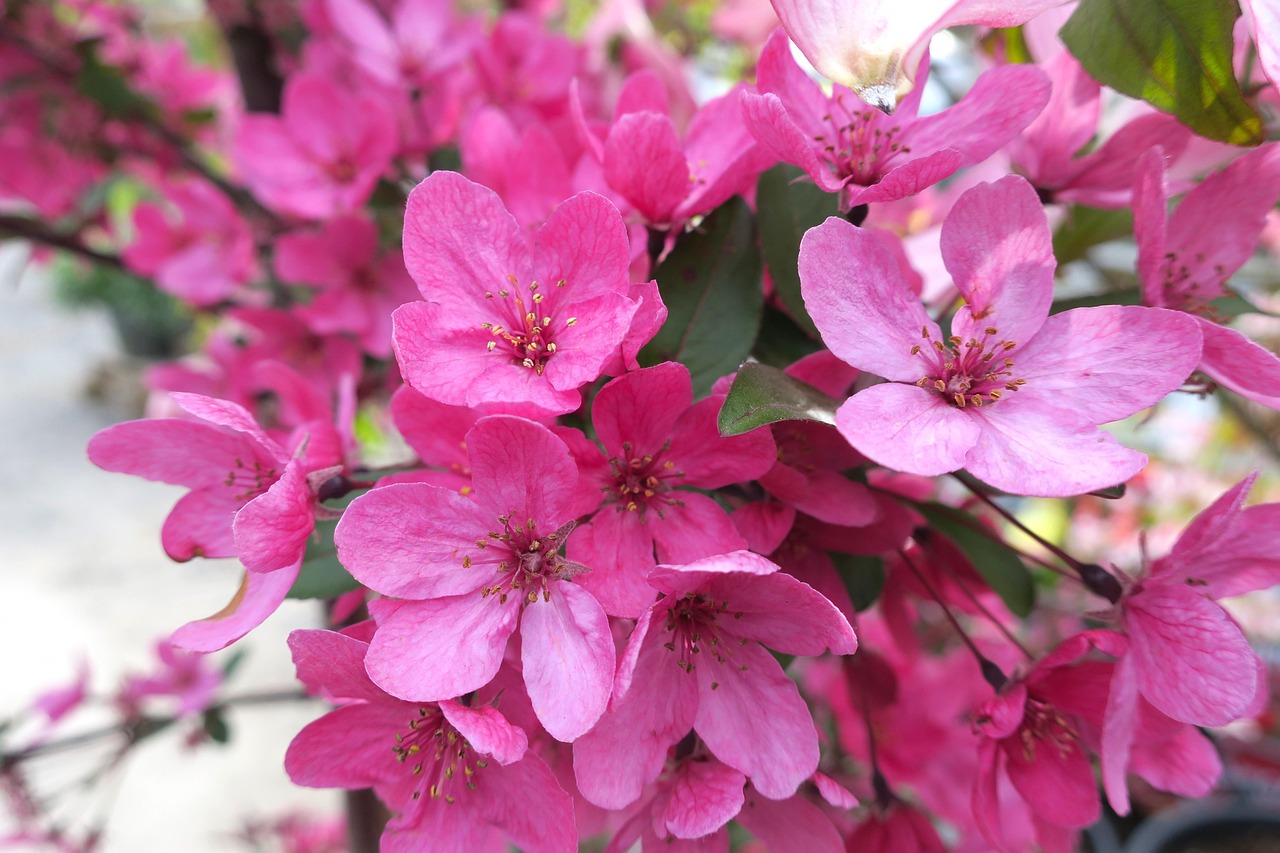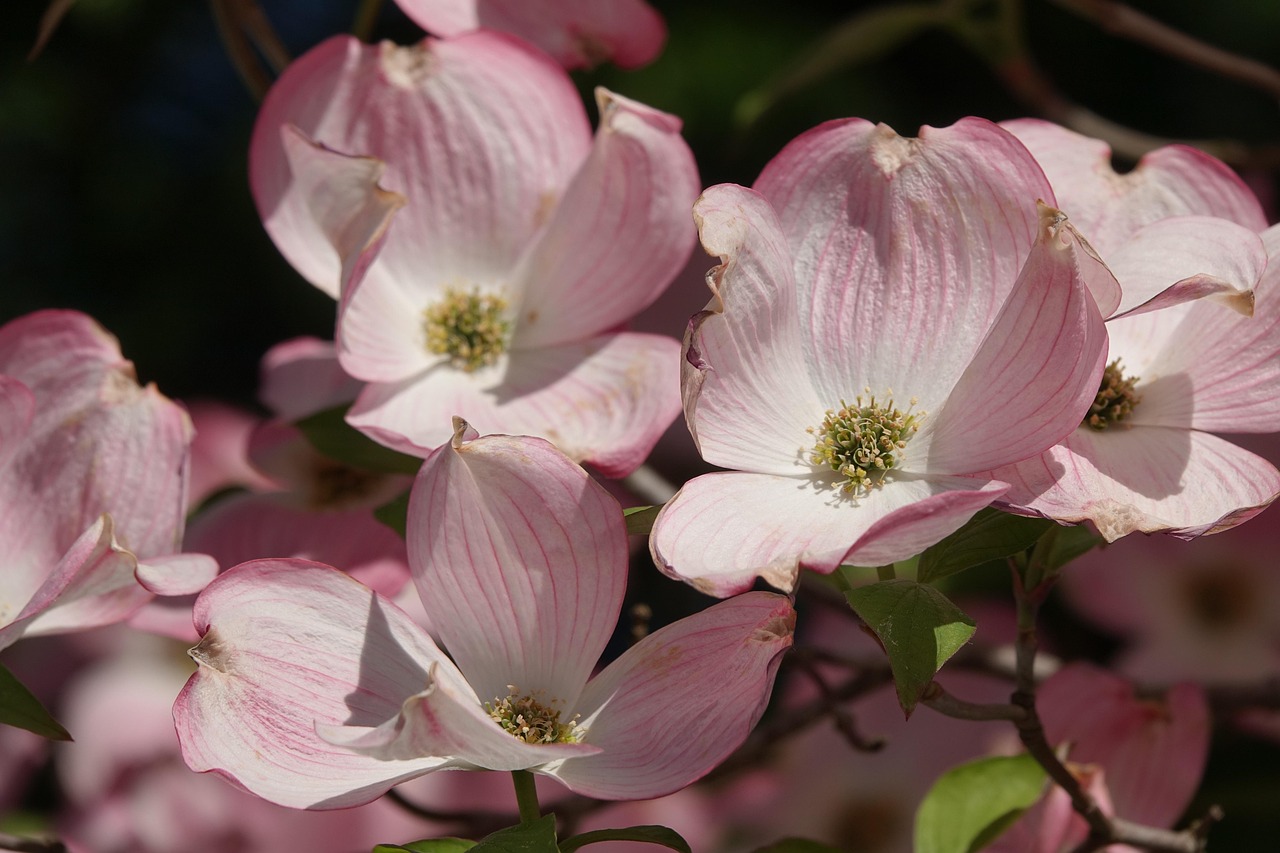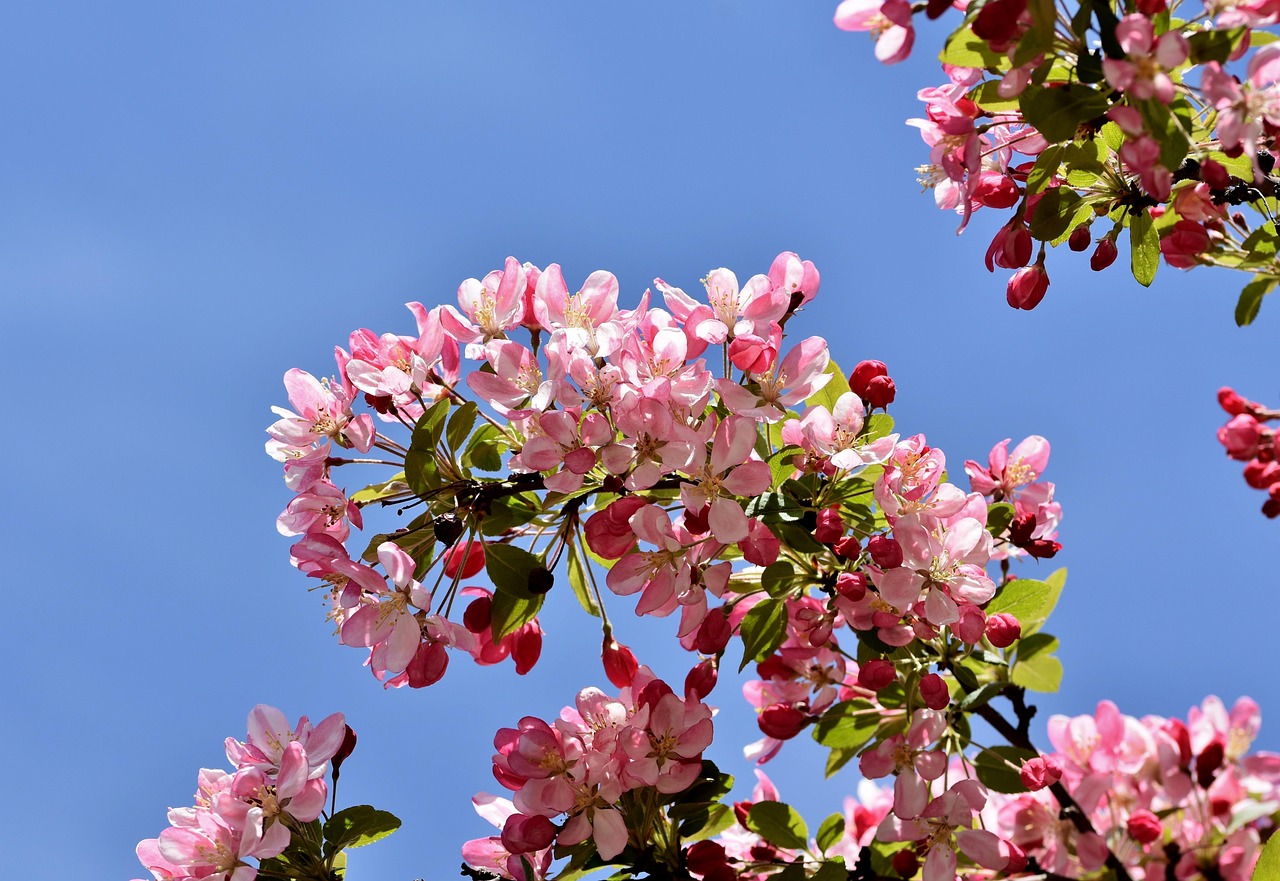Crabapple tree pruning enhances wildlife corridors by promoting healthy growth, improving habitat quality, and ensuring a diverse range of food sources for birds and other wildlife. Proper pruning techniques can create an ideal environment for various species, fostering biodiversity and ecological balance.
Understanding Crabapple Trees and Their Importance
Crabapple trees (Malus spp.) are not only beautiful additions to landscapes but also play a vital role in supporting local wildlife. These trees produce small, nutrient-rich fruits that attract birds, deer, and other animals. Additionally, their flowers provide essential nectar for pollinators such as bees and butterflies. By integrating crabapple trees into wildlife corridors, we can enhance the ecological health of our environments.

Wildlife corridors are critical pathways that allow animals to move safely between habitats. These corridors support migration, breeding, and foraging activities. As urbanization continues to encroach on natural habitats, the importance of maintaining and creating these corridors becomes even more evident. Crabapple trees serve as excellent components of these pathways due to their adaptability and benefits to various species.
Benefits of Pruning Crabapple Trees
Pruning crabapple trees is essential for maintaining their health and maximizing their benefits to wildlife. The following are key advantages of proper pruning:
- Encourages Healthy Growth: Regular pruning removes dead or diseased branches, allowing for healthier and more vigorous growth.
- Improves Air Circulation: Thinning out dense foliage promotes better air circulation, reducing the risk of fungal diseases.
- Enhances Fruit Production: Pruning can increase fruit yields by allowing more sunlight to reach the interior branches.
- Promotes Wildlife Habitat: A well-pruned tree can support a more diverse range of plant species, attracting various wildlife.
When to Prune Crabapple Trees
The timing of pruning is crucial for the health of crabapple trees. Typically, the best time to prune these trees is during late winter or early spring before new growth begins. This timing allows for effective cuts while minimizing stress on the tree.

However, it is important to avoid pruning during the blooming period to ensure that you do not remove potential flowers that could develop into fruit. In areas with significant snowfall, pruning should also be completed before heavy snowfalls to prevent damage to branches.
Essential Pruning Techniques for Crabapple Trees
To effectively prune crabapple trees, several techniques can be utilized. Understanding these methods ensures that the tree remains healthy while also benefiting wildlife corridors.
Crown Thinning
Crown thinning involves selectively removing branches from the tree’s canopy. This technique improves light penetration and air circulation within the tree. It is important to remove no more than 20% of the canopy at a time to avoid stressing the tree.

Crown Raising
Crown raising entails removing lower branches, providing space for movement below the tree. This technique is particularly beneficial in wildlife corridors as it allows animals to move freely while ensuring that sunlight reaches the ground level plants.
Crown Reduction
Crown reduction is used to decrease the overall height and spread of the tree. This is useful in urban settings where space may be limited. It is essential to make cuts at a natural junction or bud to promote healthy regrowth.
Tools Needed for Pruning
Having the right tools is essential for effective pruning. Here are some common tools that should be included in your pruning kit:

- Hand Pruners: Ideal for small branches up to ¾ inch in diameter.
- Loppers: Suitable for branches that are ¾ inch to 1½ inches thick.
- Saw: Use a pruning saw for larger branches over 1½ inches.
- Safety Gear: Always wear gloves and safety glasses to protect yourself while pruning.
Best Practices for Pruning Crabapple Trees
To achieve the best results when pruning crabapple trees, consider the following best practices:
- Assess the Tree: Before beginning, evaluate the overall shape and health of the tree.
- Make Clean Cuts: Use sharp tools to ensure clean cuts that heal quickly.
- Avoid Topping: Never cut off the top of the tree indiscriminately; this can lead to weak regrowth.
- Observe Wildlife Needs: Keep in mind the habitat requirements of local wildlife when deciding which branches to prune.
By implementing these practices, you can enhance not only the health of your crabapple trees but also their role within wildlife corridors. The careful balance between aesthetics and ecological function will contribute greatly to creating thriving habitats for local wildlife.
Common Pests and Diseases Affecting Crabapple Trees
Crabapple trees, while hardy and beneficial for wildlife, are susceptible to various pests and diseases. Understanding these threats is essential for effective pruning and overall tree health. Addressing these issues proactively can help maintain the vitality of your crabapple trees, ensuring they continue to thrive as wildlife habitats.
Pests
Several pests can affect crabapple trees. The following are some of the most common pests to be aware of:
- Apple Maggot: This pest lays eggs in the fruit, leading to damage and early fruit drop.
- Spider Mites: These tiny insects feed on the leaves, causing discoloration and leaf drop.
- Scale Insects: These pests attach themselves to branches and leaves, sucking sap and weakening the tree.
- Caterpillars: Various caterpillar species can defoliate trees by feeding on leaves.
Diseases
In addition to pests, crabapple trees are prone to several diseases. Some notable ones include:
- Cedar-Apple Rust: This fungal disease causes yellow-orange spots on leaves and affects overall tree health.
- Fire Blight: A bacterial disease that causes wilting and blackening of flowers and shoots.
- Powdery Mildew: This fungal infection leads to white, powdery spots on leaves, which can inhibit photosynthesis.
- Apple Scab: A disease that creates dark spots on leaves, affecting their ability to photosynthesize.
Preventive Measures for Maintaining Healthy Crabapple Trees
To combat pests and diseases effectively, implementing preventive measures is crucial. Here are several strategies that can help maintain the health of crabapple trees:
- Regular Inspections: Frequently check your trees for signs of pests or diseases. Early detection is key to successful management.
- Proper Watering: Ensure that trees receive adequate water, especially during dry spells. Overwatering should be avoided to prevent root rot.
- Mulching: Apply organic mulch around the base of the tree. This helps retain moisture and regulate soil temperature.
- Fertilization: Use a balanced fertilizer to promote healthy growth. Proper nutrition enhances resistance to diseases.
The Role of Crabapple Trees in Wildlife Corridors
Crabapple trees provide numerous benefits within wildlife corridors. Their presence supports biodiversity and aids various species in several ways. Below are some key roles these trees play in wildlife habitats:
Nesting Sites
The dense foliage of crabapple trees offers excellent nesting sites for birds. Species such as finches, sparrows, and even some raptors may use these trees for shelter and breeding. By providing safe nesting areas, crabapple trees contribute to the overall population health of these avian species.
<h3.Food Source
The fruits produced by crabapple trees are a vital food source for many animals. Birds, deer, and small mammals rely on these fruits for sustenance throughout the year. The following table outlines the various wildlife species that benefit from crabapple fruit:
| Wildlife Species | Type of Benefit |
|---|---|
| Birds (e.g., Robins, Blue Jays) | Fruit consumption |
| Squirrels | Nesting material and food |
| Deer | Foraging during fall |
| Bees | Nectar from flowers |
Ecosystem Support
Crabapple trees also contribute to ecosystem support by providing habitat for various insects and other wildlife. The flowers attract pollinators, which are crucial for plant reproduction. Additionally, fallen fruit attracts insects, which serve as food for birds and other small animals. This interconnectedness supports a healthy ecosystem within wildlife corridors.
Integrating Crabapple Trees into Landscape Design
When planning a landscape that includes crabapple trees, it is essential to consider their placement and overall design. Proper integration can enhance both aesthetic appeal and ecological functionality. Here are some tips for including crabapple trees effectively:
- Select Appropriate Varieties: Choose varieties that are native or well-adapted to your area for optimal growth and wildlife attraction.
- Create Diversity: Plant a mix of different tree species alongside crabapples. This diversity supports a wider range of wildlife.
- Purposive Spacing: Space trees adequately to ensure they have room to grow and maintain good air circulation.
- Consider Seasonal Changes: Plan for seasonal interest by selecting varieties that produce beautiful blooms in spring and colorful foliage in fall.
By thoughtfully integrating crabapple trees into your landscape design, you can create a thriving habitat that supports local wildlife while enhancing the beauty of your surroundings.
Enhancing Wildlife Corridors with Companion Planting
Companion planting is a beneficial strategy that can enhance the effectiveness of crabapple trees within wildlife corridors. By selecting compatible plants to grow alongside crabapples, you can create a more inviting habitat for various wildlife species. This section explores the concept of companion planting and provides examples of suitable plants.
Benefits of Companion Planting
Companion planting offers several advantages when integrated with crabapple trees in wildlife corridors:
- Increased Biodiversity: A diverse planting scheme attracts a wider variety of wildlife, enhancing the ecological balance.
- Pest Control: Certain plants can deter pests naturally, reducing the need for chemical interventions.
- Soil Health: Companion plants can improve soil fertility and structure, benefiting neighboring plants.
- Pollinator Attraction: Some companion plants are specifically chosen for their ability to attract pollinators, supporting overall biodiversity.
Ideal Companion Plants for Crabapple Trees
When selecting companion plants, consider those that will thrive in similar soil and light conditions as crabapple trees. Here are some suitable options:
- Flowering Perennials: Plants like coneflowers and black-eyed Susans attract pollinators and provide color year-round.
- Natives Grasses: Native grasses such as little bluestem and prairie dropseed offer habitat for small wildlife and insects.
- Herbs: Growing herbs like thyme and oregano can deter pests while providing additional food sources for pollinators.
- Berry-producing Shrubs: Plants like elderberry and serviceberry not only provide food but also shelter for various birds and small mammals.
Seasonal Care for Crabapple Trees
Seasonal care is essential to maintain the health of crabapple trees throughout the year. Different seasons require specific attention to ensure that the trees flourish and continue to support wildlife habitats effectively. Below is a breakdown of seasonal care tasks.
Spring Care
During spring, as new growth begins, focus on the following care tasks:
- Inspect for Damage: Check for any winter damage on branches or bark and prune as necessary.
- Fertilize: Apply a balanced fertilizer to promote healthy growth and flowering.
- Watering: Ensure adequate moisture, especially if spring is dry. Newly emerging leaves require hydration.
Summer Care
In summer, the focus shifts towards maintenance and monitoring:
- Pest Management: Regularly inspect for pests and diseases. Implement organic pest control methods as necessary.
- Irrigation: Maintain consistent watering, especially during dry spells. Deep watering encourages strong root development.
- Mulching: Add mulch around the base to retain moisture and control weeds.
Fall Care
As fall approaches, prepare the tree for winter:
- Pruning: Perform light pruning to remove any dead or diseased branches. Avoid heavy pruning in late fall.
- Leaf Cleanup: Clear fallen leaves to prevent fungal diseases from overwintering on the ground.
- Watering: Continue to water until the ground freezes to ensure the tree is hydrated before winter dormancy.
winter Care
Winter care is crucial to protect crabapple trees from extreme conditions:
- Wrapping Young Trees: Use tree wraps to protect young trees from frost cracks and sunscald.
- Avoid Salting: Keep salt from sidewalks and driveways away from tree roots, as it can damage them.
- Pest Monitoring: Check for overwintering pests under the bark or in crevices, and plan for early spring treatments if necessary.
Cultural Significance of Crabapple Trees
The cultural significance of crabapple trees extends beyond their ecological benefits. These trees have been valued for centuries across various cultures, symbolizing beauty, prosperity, and resilience. Understanding their cultural importance can deepen our appreciation for these trees within wildlife corridors.
Historical Uses
Historically, crabapple trees have been used in diverse ways:
- Culinary Uses: The fruit has been utilized in traditional recipes for jellies, sauces, and beverages.
- Cultural Symbolism: In many cultures, crabapples symbolize beauty and love. They are often featured in folklore and traditional stories.
- Matrimonial Traditions: Some cultures have used crabapple blossoms in wedding ceremonies to symbolize fertility and love.
Modern Appreciation
In contemporary society, crabapple trees continue to be celebrated for their aesthetic qualities. They are widely planted in parks and gardens for their beautiful spring flowers and vibrant fall colors. Additionally, they are increasingly recognized for their role in supporting local ecosystems, making them a valuable asset in urban planning and landscape design.
The appreciation of crabapple trees transcends mere aesthetics; it fosters a connection between people and nature. By promoting their use within wildlife corridors, we can preserve their cultural legacy while enhancing biodiversity in our environments.
Enhancing Community Engagement with Crabapple Trees
Incorporating crabapple trees into wildlife corridors also opens up opportunities for community engagement and education. Local communities can participate in various activities that not only enhance their surroundings but also foster a deeper understanding of environmental stewardship.
Community Planting Events
Organizing community planting events can be an effective way to involve local residents in enhancing wildlife corridors. These events provide hands-on experiences where community members can:
- Learn about Native Species: Participants can gain knowledge about the importance of native species and their roles in local ecosystems.
- Foster Community Pride: Engaging in tree planting fosters a sense of ownership and pride in community green spaces.
- Encourage Collaborative Efforts: Working together promotes collaboration among neighbors and strengthens community bonds.
Educational Workshops
Educational workshops focused on crabapple trees and their ecological significance can provide valuable information for community members. These workshops can cover a range of topics, including:
- Pruning Techniques: Teaching proper pruning methods not only maintains tree health but also empowers individuals to care for their local environment.
- Pest and Disease Management: Educating participants on recognizing and managing common pests and diseases can enhance tree resilience.
- Wildlife Observation: Workshops can encourage participants to observe and document wildlife interactions with crabapple trees, fostering a connection with nature.
Challenges in Maintaining Crabapple Trees
While crabapple trees offer numerous benefits, maintaining them within wildlife corridors does come with challenges. Understanding these challenges can help in developing effective management strategies.
Environmental Stressors
Environmental stressors such as drought, extreme temperatures, and soil quality can impact the health of crabapple trees. To mitigate these issues, consider the following:
- Soil Testing: Conduct soil tests to determine pH and nutrient levels, ensuring optimal growing conditions.
- Irrigation Practices: Implement efficient irrigation practices to ensure trees receive adequate water during dry periods.
- Mulching: Use organic mulch to help retain soil moisture and regulate temperature.
Pest and Disease Resistance
As mentioned earlier, crabapple trees are susceptible to various pests and diseases. Continuous monitoring and management are essential to maintain their health. Strategies include:
- Integrated Pest Management (IPM): Employ IPM techniques to manage pests while minimizing harm to beneficial organisms.
- Disease-resistant Varieties: Opt for disease-resistant crabapple varieties when planting to reduce the risk of infestations.
- Regular Maintenance: Schedule regular inspections and maintenance tasks to address any emerging issues promptly.
Cultivating a Sustainable Future
The integration of crabapple trees into wildlife corridors is a step toward cultivating a sustainable future. These trees not only enhance biodiversity but also contribute to healthier ecosystems. By recognizing their value, we can advocate for sustainable landscaping practices that prioritize the well-being of both flora and fauna.
To further promote sustainability, consider joining forces with local environmental organizations. Collaborative efforts can lead to larger-scale initiatives aimed at conservation and habitat restoration, benefiting both wildlife and communities alike.
Final Thoughts
Crabapple trees serve as a vital component of wildlife corridors, offering ecological, cultural, and aesthetic benefits. Through proper pruning techniques, seasonal care, and thoughtful integration within landscapes, these trees can thrive and support local wildlife populations. Engaging communities through planting events and educational workshops fosters a collective commitment to environmental stewardship.
While challenges exist in maintaining these trees, proactive measures can be taken to ensure their health and longevity. By cultivating an appreciation for crabapple trees and the roles they play in our ecosystems, we contribute to a richer biodiversity that enhances both natural habitats and our own lives.
The journey toward creating thriving wildlife corridors filled with vibrant crabapple trees is not just about planting trees—it’s about fostering connections between people, wildlife, and the environment. Together, we can nurture these connections and promote sustainable practices that ensure the health of our ecosystems for generations to come.
